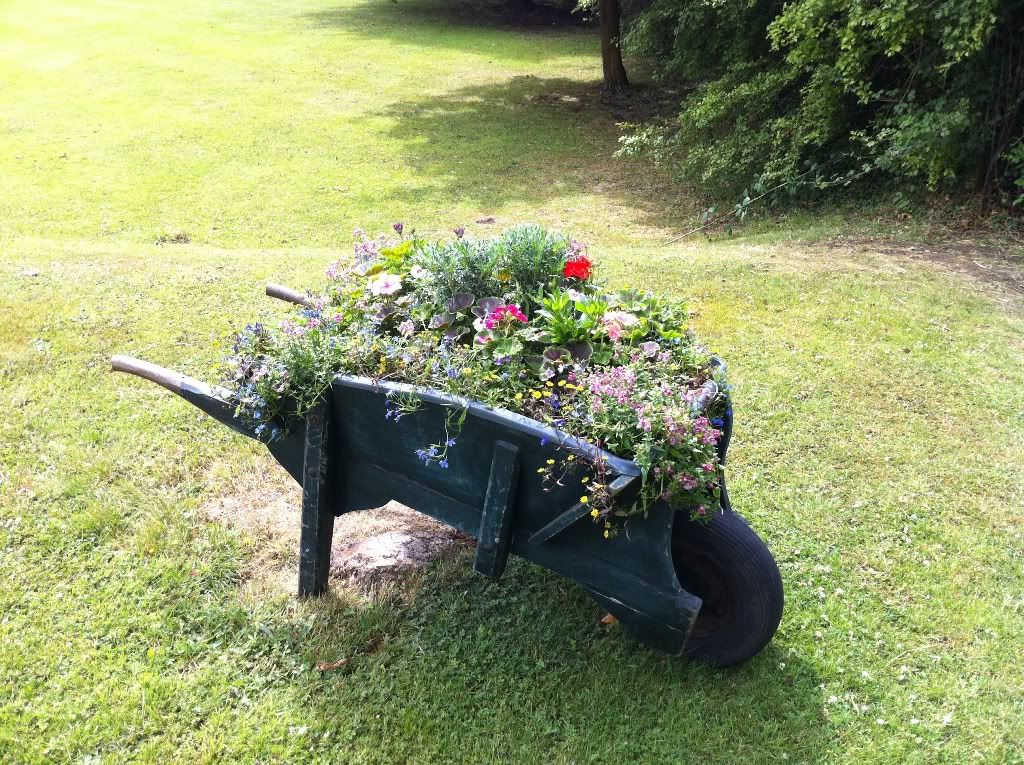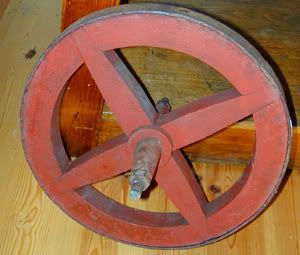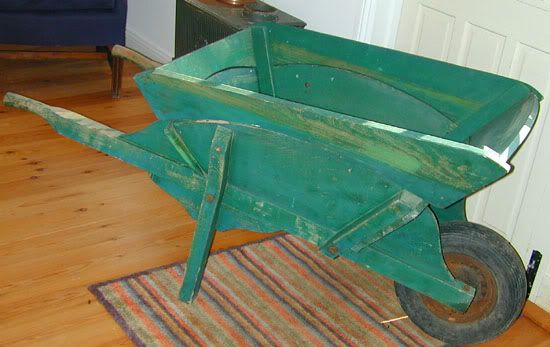DeanN
Established Member
An unusual request, and one that I spent far too much time on – but I enjoyed every minute of making it.
A customer had a wheelbarrow planter that he wanted replacing, with few design considerations other than rough dimensions and to be “natural” in finish.
The original planter:

The timber selection was Western Red Cedar, sourced rough sawn from Arnold Laver and kindly planed up by a forum member. First step was to biscuit and glue up the panels, before using some MDF templates that I’d prepared to create the outline of the main components.

Unfortunately I encountered a little tear-out on one of the panels and this had to be cleaned up and a piece of timber glued in prior to sanding.

The sides and front/back were screwed together and the holes plugged.


Same approach with the arms, legs and supports.

A cast iron wheel was sourced and given a coat of black hammerite

And finally the top attached before receiving a thorough sanding. The barrow was handed over without any finish, with a recommendation that it’s lined before use. The black markings you can see on the inside of the barrow are where the boards rested on my clamps – these will not be seen once the barrow is filled.




A customer had a wheelbarrow planter that he wanted replacing, with few design considerations other than rough dimensions and to be “natural” in finish.
The original planter:

The timber selection was Western Red Cedar, sourced rough sawn from Arnold Laver and kindly planed up by a forum member. First step was to biscuit and glue up the panels, before using some MDF templates that I’d prepared to create the outline of the main components.

Unfortunately I encountered a little tear-out on one of the panels and this had to be cleaned up and a piece of timber glued in prior to sanding.

The sides and front/back were screwed together and the holes plugged.


Same approach with the arms, legs and supports.

A cast iron wheel was sourced and given a coat of black hammerite

And finally the top attached before receiving a thorough sanding. The barrow was handed over without any finish, with a recommendation that it’s lined before use. The black markings you can see on the inside of the barrow are where the boards rested on my clamps – these will not be seen once the barrow is filled.











